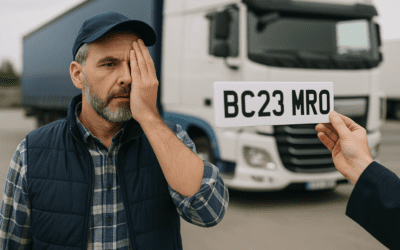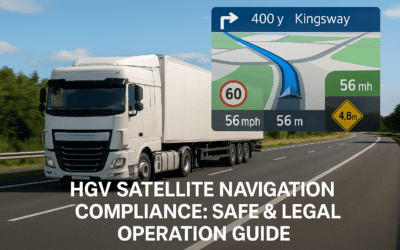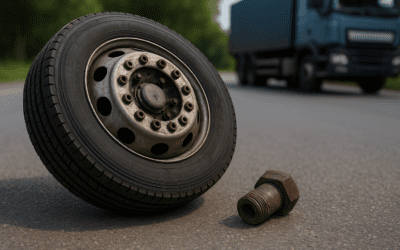Unlocking Opportunities: Everything You Need to Know About Getting Your O Licence
In today’s fast-paced transport and logistics industry, securing your O Licence isn’t just a regulatory step — it’s the key to unlocking new business opportunities. Whether you’re planning to start your own haulage business or operate vehicles to transport your own goods, understanding the O Licence application process is essential.
This guide explains everything you need to know, from eligibility requirements and costs to maintaining compliance. With the right knowledge — and expert support from OLMC’s Operator Licence specialists — you can navigate the process smoothly and get your business moving faster.
What Is an O Licence and Why Do You Need It?
The Operator’s Licence (commonly called an O Licence) is a legal requirement for any business that operates commercial vehicles over 3,500kg in the UK (or 2,500kg for European use). It ensures that operators meet standards of road safety, environmental protection, and financial stability.
Holding an O Licence shows that your business runs professionally and legally — something that clients, suppliers, and enforcement bodies all look for. More importantly, it allows you to expand your operations with confidence and compliance.
Learn more about O Licence requirements on the official GOV.UK website.
Types of O Licences
Choosing the right type of licence is crucial. The Traffic Commissioner issues three main types:
1. Standard National O Licence
Ideal for businesses operating within the UK. This licence allows you to carry your own goods and those for hire or reward across national routes.
2. Standard International O Licence
Designed for companies operating across borders. It allows you to transport goods to and from other countries within Europe.
3. Restricted O Licence
This licence is for businesses carrying only their own goods, not for hire or reward. Common examples include companies like builders or scaffolders who use HGVs for internal logistics.
💡 Tip: Before applying, review your business operations and growth plans carefully. The right licence will save time, cost, and compliance headaches later.
O Licence Eligibility Requirements
Before applying, you must meet key legal and professional requirements:
Good Repute
Applicants must have a clean record with no serious transport-related or financial convictions. The Traffic Commissioner reviews your history to ensure you’re trustworthy and compliant.
Financial Standing
You must prove you have enough funds to maintain vehicles and operations. Evidence such as bank statements, credit facilities, or financial accounts will be required.
Professional Competence
Standard licence holders must appoint a qualified Transport Manager with a CPC (Certificate of Professional Competence) who oversees compliance with transport regulations.
The O Licence Application Process
The process may seem complex, but with clear steps — and expert support — it’s manageable:
- Choose your licence type (Standard National, Standard International, or Restricted).
- Prepare your business information, including financial details and safety procedures.
- Secure an operating centre — a suitable, off-road location where vehicles are parked and maintained safely.
- Publish a public notice in a local newspaper declaring your intent to operate from that location (usually 21 days).
- Submit proof of financial standing and vehicle maintenance arrangements.
- Await Traffic Commissioner review and respond to any requests for clarification.
⚠️ Common mistake: Incomplete or poorly prepared applications can cause long delays. OLMC’s Operator Licence Application Service ensures your submission is handled correctly and efficiently.
O Licence Fees and Costs
It’s important to plan for the following fees:
- Application fee – payable when you submit your application
- Granting fee – due once your licence is approved
- Advertising cost – for publishing your public notice
- Renewal fee – every 5 years
OLMC’s compliance team can help you calculate these costs accurately and ensure your documents meet DVSA and Traffic Commissioner standards.
Maintaining Your O Licence: Compliance Essentials
Getting your O Licence is just the beginning. To keep it valid, you must maintain strict compliance with DVSA and Traffic Commissioner regulations.
Key responsibilities include:
- Vehicle maintenance: Regular inspections, servicing, and record-keeping.
- Driver hours compliance: Adhere to assimilated driver hours regulations (previously EU Driver Hours Rules).
- Record keeping: Maintain accurate logs, defect reports, and tachograph data.
Failure to comply can result in warnings, fines, or even licence revocation — so continuous monitoring is essential.
🔧 OLMC’s O Licence Compliance Audits help you maintain full compliance year-round and reduce operational risk.
Conclusion: Start Your O Licence Journey with Confidence
Securing an O Licence opens the door to greater business opportunities in the haulage and transport sector. With clear understanding and professional guidance, you can complete the process efficiently and operate safely, legally, and profitably.
Ready to get started?
👉 Contact OLMC’s O Licence experts today — we’ll guide you through every step of the process.
It typically takes 9–12 weeks, depending on how complete your application is and how quickly the Traffic Commissioner processes it.
Yes — for Standard National and International O Licences. Restricted licences do not require one.
Absolutely. Our compliance experts can prepare and submit your entire O Licence application, saving you time and ensuring accuracy.
Author: Carl Myers
Website: http://www.olmcgroup.co.uk



